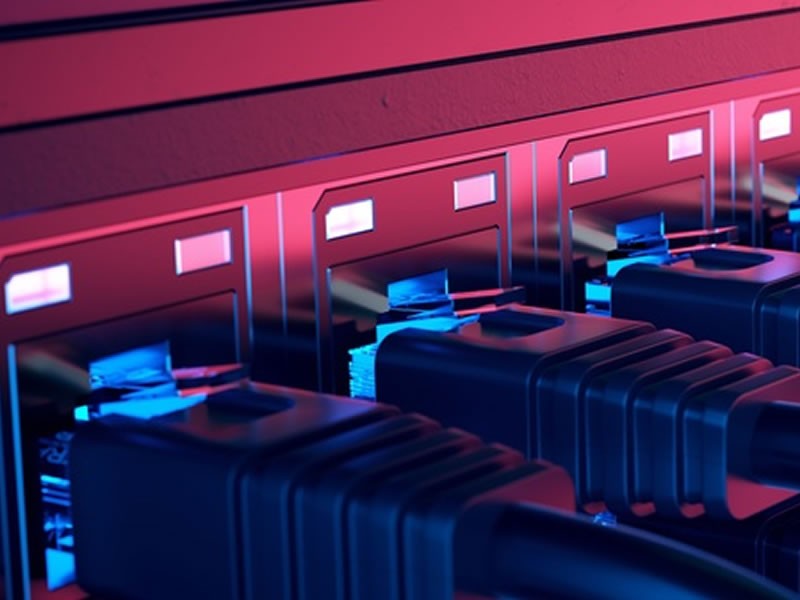Insight Blog
Agility’s perspectives on transforming the employee's experience throughout remote transformation using connected enterprise tools.
9 minutes reading time
(1722 words)
Featured
Why High Availability is Crucial for IoT
High availability describes systems or networks that can operate continuously, with minimal downtime, even during peak usage. How crucial is it for IoT?
Internet of Things (IoT) devices are ubiquitous these days, from smart homes to industrial applications. IoT is the interconnection of everyday objects or devices through the Internet. These connected devices allow people to monitor the environment, communicate with each other, and even control them remotely, changing how people live.
As IoT becomes more prevalent, companies are looking at ways to leverage its benefits. High Availability (HA) is essential for IoT systems because downtime can cause serious problems.
This article will discuss how HA works in IoT and its importance. It will also provide some tips on implementing high availability in your own IoT system.
What Is High Availability?
High Availability (HA) is an application's ability to continue operating when one component fails. In other words, HA ensures that the service provided by the application continues uninterrupted.
MQTT servers are critical pieces of any IoT infrastructure, especially in the business industry. And to ensure that it doesn't fail, MQTT broker clusters are required to achieve a stable connection and always-on functionality. To enable MQTT high availability, at least three nodes are required to handle the traffic if the others stop working.
Ensuring proper MQTT authorization is crucial for maintaining the security and reliability of your IoT systems. It allows your smart automation to keep operating, providing continuous service at all times and in all cases.
How Does High Availability Work In IoT?
There are two main components to any IoT solution: hardware and software. Hardware includes sensors, actuators, microcontrollers, and so forth, while the software contains the code that runs on these components.
Hardware failures can occur at any time. A sensor may fail, causing data loss; an actuator may malfunction, preventing the device from performing its intended task; and microcontrollers can crash, corrupting memory.
Software solutions can help mitigate these issues. Software solutions include redundancy, fault tolerance, and load balancing.
- Redundancy - Redundancy is the process of having multiple copies of the same program running simultaneously. To ensure that your IoT device functions correctly, you must ensure that redundant components exist, and each one should have a backup. Use multiple sensors, actuators, and microcontrollers. For example, let's say you have a smart doorbell that uses motion detection as its primary method of detecting visitors. If the motion detector malfunctions, you can replace it with a second motion detector.
- Fault Tolerance - A system can recover from errors through fault tolerance. The system needs to know what went wrong and fix it when something goes wrong. You must design your system with error recovery capabilities to achieve fault tolerance.
- Load Balancing - Load balancing distributes workload across different parts of the system. When designing your IoT system, you must consider how much work each component does. Some components do very little work, while others perform intensive tasks.
An excellent way to distribute workload among components is through load balancing, which involves assigning different tasks to different devices based on their capacity. For example, if you have a networked thermostat that controls several rooms, you might assign some rooms to run at full power while others run at half power.
Why Is High Availability Important In Businesses?
As businesses begin harnessing the power of internet-connected devices, they face several challenges. It's especially true for industrial manufacturers who rely on their equipment to keep running 24/7. When things go wrong, downtime can cost thousands of dollars per hour.
But because of the rise of the IoT, this problem is finally being solved. Here are some of the most common problems industrial manufacturers face and how high availability can help solve them.
1. Data Loss - Industrial manufacturers are notorious for losing data. Many of them lose a large amount of data throughout their production. Why? Because they don't have enough redundancy. For example, let's say your factory produces 100 widgets daily. That means every single widget must be checked to meet quality standards. Unfortunately, if something happens during the check, you could end up with a defective product.If you only have one copy of your data, you'll need to reenter all the information from scratch manually. This process takes hours, which results in lost productivity.Fortunately, modern technolog y makes it easy to add redundancy to your systems. You just need to make sure that your servers are highly available.
2. Downtime And Outages - Another major issue facing industrial manufacturers is downtime and outages. These cost U.S. companies billions annually. But what causes downtime and outages? It usually comes from hardware failure or software issues. Unfortunately, these types of failures are challenging to predict. However, high availability makes it much easier to avoid these issues. For instance, if you were to deploy two identical servers, you could simply switch between them when something went wrong.3. Security Breaches - Security breaches are also a huge concern for industrial manufacturers. They often get hacked because they lack proper security measures. Fortunately, high availability offers an easy way to protect against cyber-attacks. For example, if you deployed multiple servers, you could quickly switch between them to prevent damage.
4. Slow Performance - Slow performance is another big problem for industrial manufacturers. Many of them end up spending hours trying to troubleshoot slow networks.
Unfortunately, this isn't always possible. After all, hundreds of different components are involved in creating a successful network.
High availability helps eliminate this problem by allowing you to scale your network as needed. So instead of waiting for your network to become stable, you can add more servers to handle additional traffic.
5. Customer Service Issues - Customer service is another area where high availability shines. It allows you to provide better customer support than ever before. After all, a server down means you won't be able to answer questions or resolve issues. However, with high availability, you can quickly switch between servers to ensure that customers receive the best experience possible.6. Scalability - Scalability is yet another reason why high availability is essential for industrial manufacturers. After all, they want their systems to grow without breaking. But many industrial networks don't offer enough scalability, so they must constantly upgrade their equipment to keep up with demand.
Good thing high availability technology provides a solution. You can easily add new servers to handle increased workloads. And since you only need to replace one server, you won't have to spend thousands of dollars upgrading your entire system.
7. Cost - Finally, high availability saves money. After all, it reduces downtime and increases productivity. For example, if you had to shut down your network every time something broke, you would lose a lot of time and money. Fortunately, high availability technology lets you avoid these problems.Benefits of Using High Availability in IoT
High availability provides many benefits. Here are just a few examples:
1. Increased Reliability - People use IoT devices every day. They rely on them to keep track of their homes or businesses, monitor their health, and control their appliances. If an IoT device doesn't work, people will be unhappy.
However, because of high availability, IoT devices can withstand more failure than traditional systems. Unlike before, when a server crashes, there's a chance that the device will malfunction, but with the rise of new technologies giving better reliability, users won't even notice.
2. Lower Total Cost Of Ownership (TCO) - It's easy to think that IoT devices are expensive. After all, they require specialized hardware and software. But high availability lowers the total cost of ownership. By reducing downtime, you save money because you don't have to pay employees to fix broken devices. When you own a large business, chances are you'll require to deploy devices in large numbers, which often cause multiple downtimes due to large batches of devices in use. High availability helps reduce downtime by ensuring that a single component isn't responsible for all the work. It also reduces the number of devices needed to provide similar functionality.
3. Improved Security - Security is one of the biggest concerns of any business owner. The IoT makes security even harder because it allows people to access data anywhere.
But with the birth of high availability, companies can protect themselves against cyber-attacks. Instead of worrying about multiple points of failure, high availability ensures that little, no single point of failure exists.
Security is also a big challenge to IoT developers. The Internet of Things is full of potential security threats. For example, hackers could use IoT devices to steal personal information. They could even turn your thermostat into a botnet.
By deploying high availability, you can eliminate many of these risks. Since your devices are protected from failure, you can rest assured that your data is safe.
4. Better User Experience - If you own a smart home or office, you've experienced poor user experiences. You may find yourself waiting hours for a device to respond. Or maybe you get stuck trying to figure out why your lights aren't turning off.
With high availability, these problems go away. Devices don't fail, so you never have to worry about whether your devices will function or not. And since everything runs smoothly, you'll spend less time troubleshooting issues.
5. Better Customer Service - Lastly, high availability provides customers with better customer service. If a device fails, you won't be able to serve them. For example, if you run an alarm company, you might not be able to send alerts when there's a problem. But with high availability, you can ensure that your customers always receive the best service possible.
In terms of apps, high availability helps ensure they function properly and work flawlessly. If a server goes down, your app will still work fine. So, you can continue providing your customers with great service.
Final Thoughts
Even though high availability may seem complicated at first, it makes sense once you understand how it works. You can use it to improve your business in ways you never thought possible. If you're a business owner and haven't yet adopted high availability, now is the perfect time to start.
Categories
Blog
(2604)
Business Management
(320)
Employee Engagement
(208)
Digital Transformation
(173)
Intranets
(119)
Growth
(118)
Remote Work
(61)
Sales
(48)
Collaboration
(37)
Culture
(29)
Project management
(29)
Customer Experience
(26)
Knowledge Management
(21)
Leadership
(20)
Comparisons
(5)
News
(0)
Ready to learn more? 👍
One platform to optimize, manage and track all of your teams. Your new digital workplace is a click away. 🚀
Free for 14 days, no credit card required.














